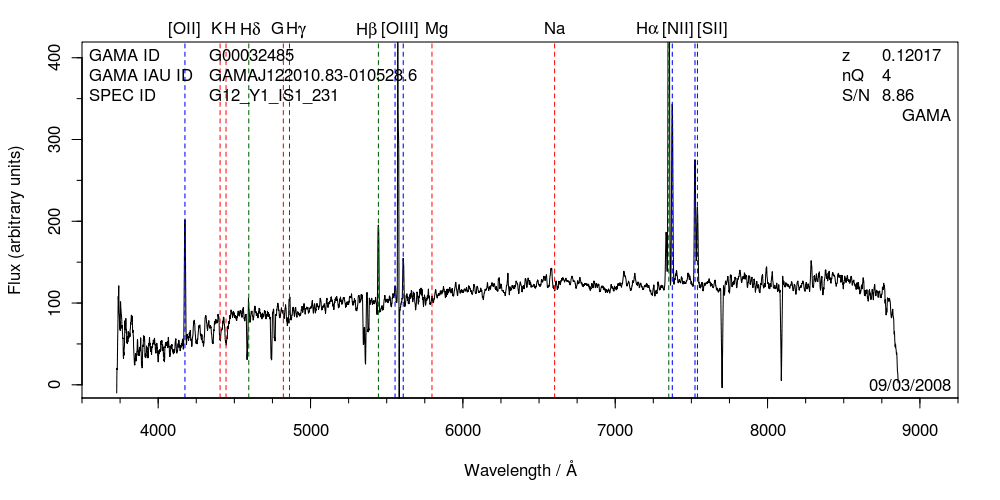"Torgo" Galaxy :)
-
 by
Budgieye
moderator
by
Budgieye
moderator
A class of object noted for being boring and furry. Named after Bo-the-Wolf 's cat. 😃
Torpid Ordinary Red Galactic Object

The spectral charts shows that it is an AGN and has star-forming areas. So it would be more interesting if it was close enough for us to see anything.
Surprisingly, the chart shows that most of the galaxy is made of red stars, though it looks blue in GAMA - KiDS
There seem to be some absorption lines unlabelled.
Red in SDSS, blue in GAMA KiDS
even worse in SDSS
http://skyserver.sdss.org/dr9/en/tools/explore/obj.asp?ra=185.04514455&dec=-1.09128872
some info about similar galaxies
3.8 Green peas, compact starburst, Blue compact starburst , OIII objects https://talk.galaxyzoo.org/#/boards/BGZ0000001/discussions/DGZ0000wrb?page=3&comment_id=53d8b93a0d43f77bb6000f98
Posted
-
 by
JeanTate
in response to Budgieye's comment.
by
JeanTate
in response to Budgieye's comment.
This may, or may not, be a "little blue spheroid" (LBS), as described in some detail in the GAMA papers, particularly Lange+ (2016).
Ditto what Fukugita+ (2007) reported (this class of object is NOT discussed in any GZ or GZ2 paper, that I have been able to find, anyone have references to the contrary?):
We noted that some galaxies, notably among those with T=-1, show a common feature characterized by a high surface brightness and a smooth light distribution, but their appearance is definitely not that of E or S0 galaxies. These objects frequently have more irregular shapes than early-type galaxies, but the light distribution is too smooth and/or surface brightness too high to be classified as Im. They appear to be reminiscent of Irr II galaxies in the Hubble Atlas or the ‘‘amorphous’’ galaxies introduced by Sandage & Brucato (1979), who characterized them as ‘‘not E, S0, or any type of spiral no matter how peculiar, but rather [having] an amorphous appearance to the unresolved light.’’
Somewhat off-topic: both these papers (and the GAMA series as well) may be interest to those responding to the recent Request for help: Galaxy Zoo literature search., here in GZ Talk, in the sense that classification into neat E/S0/Sa-Sd/Irr boxes is not at all neat, when examined in detail using parameters such as stellar mass, apparent dust, bulge/disk decomposition (the distribution of best fitting Sérsic index for bulges and disks isn't well described by the classical disk/pseudobulge/bulge trichotomy), color, etc
Posted
-
 by
Budgieye
moderator
by
Budgieye
moderator
When I first started classifying in Galaxy Zoo, I found these small bright galaxies quite annoying. Yet, they are probably quite interesting. If only we could see them better.
Posted